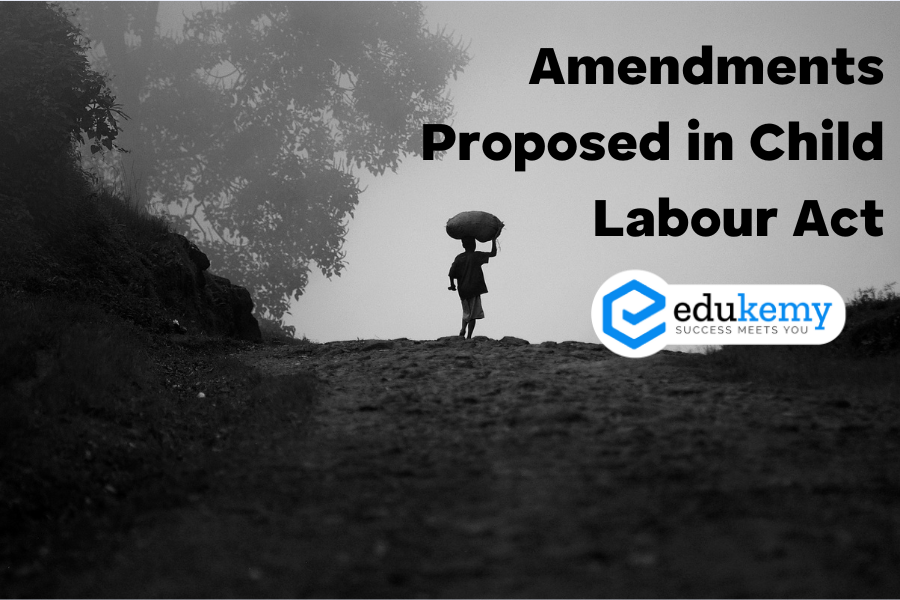
The proposed amendments to the Child Labour Act stand at the forefront of legislative efforts aimed at safeguarding the rights and well-being of the most vulnerable members of society. Rooted in the principle of protecting the innocence and ensuring the holistic development of children, these amendments represent a pivotal step towards eradicating the scourge of child labour in all its forms. With a focus on enhancing the legal framework to better address the evolving challenges and nuances of modern-day exploitation, these proposed changes signal a collective commitment to creating a safer, more equitable future for the next generation. By bolstering enforcement mechanisms, expanding provisions for rehabilitation and education, and fostering greater collaboration between stakeholders, the amendments aspire to not only mitigate the immediate harms of child labour but also to address its underlying causes and systemic injustices. As lawmakers deliberate on these crucial reforms, they bear the weighty responsibility of shaping policies that reflect our shared values of compassion, justice, and respect for human dignity.
Contents
- 1 Child Labour (Prohibition and Regulation) Amendment Bill, 2016:
- 2 FAQs
- 2.1 Q: What are the proposed amendments to the Child Labour Act?
- 2.2 Q: Why are these amendments necessary?
- 2.3 Q: How will the proposed amendments impact child labour practices?
- 2.4 Q: What measures are included in the proposed amendments to rehabilitate rescued child labourers?
- 2.5 Q: How can stakeholders contribute to the effectiveness of these proposed amendments?
- 3 In case you still have your doubts, contact us on 9811333901.
Child Labour (Prohibition and Regulation) Amendment Bill, 2016:
Objectives: The bill aims to broaden the legal framework combating child labor, incorporating stricter measures to deter violations of established norms.
Key Provisions:
- Age Categories:
- Prohibits the employment of children below 14 years in all occupations, with exceptions for situations where a child assists their family.
- Introduces a new category, “adolescent,” encompassing individuals between 14 and 18 years.
- Hazardous Occupations:
- Restricts the employment of adolescents in hazardous occupations, including mines, hazardous processes, and inflammable substance handling.
- Grants the Union Government the authority to modify the list of hazardous occupations.
- Cognisable Offense:
- Elevates child labor to a cognizable offense, intensifying the legal consequences for perpetrators.
- Penalties:
- Increases the punishment for employing a child to imprisonment ranging from 6 months to 2 years, or a fine of 20,000 to 50,000 Rupees, or both.
- Proposes similar penalties for employing an adolescent in a hazardous occupation.
- Government Oversight:
- Empowers the government to conduct periodic inspections of locations where the employment of children and adolescents is prohibited.
- Allows the delegation of enforcement powers to a District Magistrate (DM) for effective implementation.
- Rehabilitation Fund:
- Introduces a provision for establishing a rehabilitation fund to support the reintegration of affected children.
Critiques of the Bill:
- Dilution of Hazardous Work Prohibition: Alters the schedule of hazardous work, reducing the list from 83 prohibited activities to only three.
- Generic Application of Hazardous Criteria: Identifies hazardous work based on risks for adult workers, overlooking the unique vulnerabilities of children.
- Loopholes for Under-14 Work: Permits children below 14 to engage in non-hazardous “family enterprises” after school hours and during vacations. Defines family broadly, potentially including extended family members, raising concerns about child welfare.
FAQs
Q: What are the proposed amendments to the Child Labour Act?
The proposed amendments aim to strengthen the existing Child Labour Act by introducing stricter penalties for offenders, enhancing the protection of children from exploitation, and aligning the legislation with international standards on child rights. They may include provisions for increased fines, extended jail terms for violators, and comprehensive rehabilitation measures for rescued child labourers.
Q: Why are these amendments necessary?
The amendments are necessary to address loopholes and shortcomings in the current legislation, ensuring better enforcement and protection of children’s rights. With evolving societal challenges and emerging forms of exploitation, such as trafficking and online exploitation, the law needs to be updated to effectively combat these issues and provide a safer environment for children to grow and thrive.
Q: How will the proposed amendments impact child labour practices?
The amendments are expected to deter employers and individuals from engaging in child labour practices by imposing stricter penalties and enforcement measures. By enhancing legal consequences, raising awareness, and promoting education and alternative livelihood options, the amendments seek to reduce the incidence of child labour and ensure that children are not subjected to hazardous or exploitative work conditions.
Q: What measures are included in the proposed amendments to rehabilitate rescued child labourers?
The proposed amendments may include comprehensive rehabilitation measures to support rescued child labourers in their physical, psychological, and socio-economic recovery. These measures could involve access to education, vocational training, healthcare services, counseling, and reintegration support to help children transition back into mainstream society and prevent them from falling back into exploitative situations.
Q: How can stakeholders contribute to the effectiveness of these proposed amendments?
Stakeholders, including government agencies, non-governmental organizations, civil society groups, employers, and communities, play a crucial role in the successful implementation of the proposed amendments. They can contribute by raising awareness about child rights, providing support services for vulnerable families, cooperating with law enforcement agencies to identify and report cases of child labour, and advocating for policies that prioritize the well-being and protection of children. Collaboration and concerted efforts among all stakeholders are essential to effectively combat child labour and create a safe environment for children to thrive.
In case you still have your doubts, contact us on 9811333901.
For UPSC Prelims Resources, Click here
For Daily Updates and Study Material:
Join our Telegram Channel – Edukemy for IAS
- 1. Learn through Videos – here
- 2. Be Exam Ready by Practicing Daily MCQs – here
- 3. Daily Newsletter – Get all your Current Affairs Covered – here
- 4. Mains Answer Writing Practice – here

